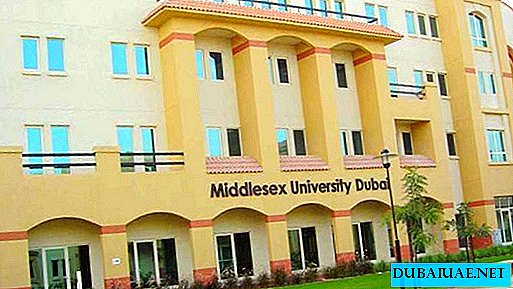 Text: Nikolai Gudalov, Master of International Relations, specialist in the history and politics of Arab countries
Text: Nikolai Gudalov, Master of International Relations, specialist in the history and politics of Arab countries The visitor of the modern Arab Emirates, the appearance of local residents is unlikely to cause associations with tribes and nomadic life. It is hard to believe that for people spending time in ultramodern offices, shopping centers and driving luxury cars, their belonging to such a collective as a tribe can be of great importance (for a contemporary, this word blows with a mixture of antiquity, wildness and exoticism). Meanwhile, Emirates still cherish their tribal origin - nasab, which in certain cases can become a good calling card. Now history buffs are diligently collecting and classifying information on nasab, resettlement and traditional occupations of numerous emirate tribes. As in other areas, here in the UAE, antiquity combines with innovations: some tribes have their own websites ...
Badw and Hadar
Ibn Khaldun
The classic example of a comparison of badva and hadar was left to us by the great Arab thinker of the XIV-XV centuries Ibn Khaldun. Here, for example, what he wrote about the effect of food on character: "... there are very few religious people in cities: the stiffness and unreasonability associated with excessive consumption of meat are widespread ... Because of this, people who practice worship and refrain from worldly things are mostly found among the inhabitants of deserts whose food is scarce. " However, for the author, these two groups are not rigidly opposed, but genetically interconnected.
The tribal world of Arabia was a special, complex social organism, and a whole "dictionary" of relevant Arabic terms has come down to us. First of all, a nomadic society was delimited from a “civilized” society, that is, settled: the first was called “badv”, “badiya” or “badaviyun” (hence the Russian word “Bedouins”), and the second - “hadar”, which meant city dwellers. Archaeological excavations show that pastoral tribes in Arabia appeared 3-2 thousand years BC, and the oldest aflage irrigation facilities were built in 1000 BC. e. The life of these tribes proceeded in parallel with the formation of the great ancient civilizations of Egypt, Mesopotamia, as well as Yemen, which was an outpost of settled culture on the peninsula. Later, in the vicinity of the lands of modern UAE, another center of urban civilization will emerge - Oman.
Residents of the desert and the townspeople, often looking down upon each other, were closely interconnected. Often, nomads settled on the earth: for example, the emirate cities of Ras Al-Kheim and Umm Al-Quwain arose in connection with the seizure of villages located earlier in their place by members of the Al Kassimi tribe, who now became townspeople. At other times, already settled tribes were driven away by more powerful competitors. For hadar and badv trade exchanges were important. Nomads regularly made transitions (musabal) to cities where they exchanged wood, honey, cheeses and refined oil (samn) for handicraft goods produced in the city. Musabalya could be far: for example, the Bedouins from Dibba, on the shores of the Gulf of Oman, brought their cattle to the markets of Dubai. Having sold it, they were hired by local merchants, who charged them to bring imported goods, like rice from India, to the nearest villages.
 Descendants of the Prophets
Descendants of the Prophets
A key role in the tribal world was played by nasab - the noble genealogy of the tribe and its members. Until now, the surnames of most indigenous Emirates include a word associated with the name of his or her tribe: for example, if the tribe is called "ahbab", then its representative is from the genus ("al") "ahbabi". Often the tribe was named after a distant ancestor, and often the whole tribe was called "banu / baths," that is, "sons, descendants of such and such." These are Bani Yas, Bani Hamad, Bani Kaab.
Al Mansouri
It is said that the Manasir tribe (Al Mansouri) owes its name to the fact that its members often emerged victorious in wars: "Mansur" means "victorious."
Among the modern emirates, representatives of the most noble tribes of all Arabia will also be found. Typically, the construction of nasab to two legendary ancestors: the north - to Adnan, the descendant of Ismail, the son of Ibrahim (Old Testament Abraham), and the south - to Kakhtan, the son of the Quranic prophet Hood, the descendant of Shem and Nuh (Noah). There are so-called sheriffs - the descendants of the prophet Muhammad (originally the so-called descendants of his grandson Hassan), and the offspring of the Hashim clan (from the Quraish tribe), to which the prophet himself belonged. There are those in the modern UAE who attribute their nasab to the Khazrajites, who, along with the Aus tribe, helped the prophet after his emigration (hijra) from Mecca to Medina, then called Yasrib.
Tribal society was very diverse, and its internal division was often confused. The main links were a family of five to six people, a large family of three to five related families, a clan, or clan (ial), sub-tribe (fahz), the tribe itself (kabila), the union of tribes (hilf). Arabs also speak of “branches” (furu), “followers” (atba) of an ancestor, etc. The word “ashira” can mean a clan, sub-tribe, and tribe. Complicating matters is the fact that the tribe is not easy to distinguish from the sub-tribe: for example, Bani Yas was originally only a confederation of tribes, which then united under the rule of one sheikh. Sometimes a tribal unit decides to become independent: all Emirates know that Al Bu-Shamis was only a part of the Naim tribe recently, but then established itself as an independent. So it’s sometimes difficult to decide which is more genealogy or politics, and all these classifications would be tedious if they didn’t play a big role in tribal self-awareness.
In addition, the tribes specialized in various occupations. Arabs considered “camel drivers” to be “real” nomads - they lived far away in the desert, their entire economy depended on the breeding of dromedaries; however, they were also involved in the transportation of caravans or went offshore. The tribes that raised goats and sheep roamed for six months, and the rest of the time they were engaged in farming at the wells, and this or that occupation could dominate among different tribes. For example, the Al Shamis tribe was nomadic, Kubaisat specialized in fishing and pearl mining, and its rich members, which typically had palm groves in the Liva oasis.
Tribal ups and downs
The tribal world was not frozen in history either - it was changing quite seriously. Pre-Islamic Arabia (until the 7th century) presents us with a classic picture of a society based on tribal affiliation. The lands of the Emirates were inhabited by tribes that began to migrate en masse from Yemen from the 2nd century AD. e. They occupied all three geographical areas - the coast with islands, the Hajar mountains and the desert.
The tribe was headed by the leader - the borrower (at different times the terms “sheikh”, “tamima” - that is, the main sheikh) could be used, which disposed of a quarter of the total income. He was chosen at a meeting of respected tribal members. The loan and representatives of large families made up the council - the Majlis, at which the most important issues, disputes and complaints were considered. The collective property was the land of the tribe with pastures and wells - dira (there is still the Deira district in Dubai), a fee was paid for its crossing by foreigners. This way allows us to talk about a kind of tribal democracy, and social stratification among the Bedouins has never reached the level of settled societies.
Majlis
Usually the Majlis gathered at a later time of day. Poets recited verses, chanting their tribe. The values of Bedouin life were expressed in such concepts as nobility (murua, muruva), fidelity to one’s word (wafa), generosity (karam) and hospitality (diafa). The Bedouin believed in the existence of genies, fate (dahr) and resurrection (raja). Hajj was performed annually in Mecca, where each tribe worshiped its deity. The system of customs and traditions was called urf. The Bedouin tribe was associated with a special sense of belonging and pride - asabiya.
Tribes collaborated and fought among themselves, more powerful tribes offered less strong patronage in exchange for tribute (huvva). In many ways, the traditional way of life was preserved after the spread of Islam, which does not cancel the revolutionary innovations that he brought. Polytheism was supplanted by faith in one Allah, attachment to a tribe by the unity of all Muslims, and fees and tributes by a single tax system. The Bedouin energy from internecine raids went into the mainstream of Islam. Many tribes inhabiting the lands of the future UAE (for example, Azd) migrated to new Islamic cities - such as Basra, and then further to Fars or Khorasan. However, before the Arab conquests, some tribes that had already accepted it were deposited from Islam: shortly after the death of the Prophet, wars of apostasy broke out (ar-Ridd). In East Arabia, the rise of pre-Islamic tribalism, the reluctance to pay taxes and the belief in false prophets led to appearances by Banu Tamim and Banu Hanifa. These movements were suppressed.
During the heyday of the Arab Caliphate, the tribal system occupied a subordinate position in relation to national life. Caliphs used nomads to protect trade routes - for example, roads from Oman to Bahrain (these names do not indicate the territory of modern states) and Basra. With the decline of central authority in Baghdad in the XI-XII centuries, however, the independence of the tribes began to grow again. Many (Avamir, Banu Jirvan, Al Jabur) returned from Iraqi "megacities" back to the future lands of the Emirates, installed new dir there. Al Jabur’s influence, for example, extended from the Persian Gulf to Hadramaut in South Arabia. These tribes, however, no longer rejected Islam - it became an integral part of their customs.
At the turn of the XVII-XVIII centuries, four tribal unions replaced Bani Yas, Manasir, Davahir and Avamir to replace the old tribes in the lands of the future Emirates. They occupied the most attractive lands - the oases of Liva, Buraimi, pastures of al-Dafra. The settlement of the respective tribes also predetermined the modern tribal mosaic of the UAE. Bani Yas settled on the territory of Dubai, who, after the arrival of the tribes of Sudan, Al Mura and others, took a dominant position here. Sharjah, where Bani Yas also settled, became the stronghold of the Al Kassimi tribe - thunderstorms of the seas, measured strength even with the British fleet. And in Ras Al Khaimah, along with the two previous tribes, Al Mualla played a prominent role. Until now, most emirates can recall that their tribe belonged to one of two competing unions - Hinawi and Hafili. The large number of tribal units could not hide the two most important changes that began to take shape, especially in the Bani Yas alliance, which played a crucial role in the history of the Emirates. Gradually, the tribes began to settle.
After water was found in the north of Abu Dhabi around 1760, many members of Bani Yas settled there, and the head of the union followed in the 1790s. Sheikh Shahbut erected a fort that has survived to our times. The gradual transition to urban life led to social stratification, strengthening the power of the chief sheikh. Gradually, he also became a hakim - ruler, and amir - commander in chief. Thus, the Al Bufalyah family of Bani Yas Union, which subjugated the other three largest unions, was to give the Emirates the ruling dynasty of Al Nahyan, to occupy a major position in Abu Dhabi and in all the UAE.
Metamorphoses of modern asabiyya
Further events with increasing speed consolidated the urban lifestyle and power of the leading sheikhs. The Pearl Boom attracted many Bedouins to the coastal cities. The British, whose dominance in the Gulf since the beginning of the 19th century was quite stable, preferred to deal and conclude agreements with strong sheikhs responsible for certain territories than with countless tribes. This is how sheikhs appear, which constitute the modern emirates of the UAE. The sheikhs themselves began to attract gifts “the last of the Mohicans” - the nomads remaining in the desert, so that they would protect the territory of the emirate and expand its borders.
The decisive factors that turned the tribal structure of the Emirates from the foundation of life into an object of historical heritage were the oil boom and the independence of the UAE, proclaimed in 1971. "Black gold" required clear boundaries between the sheikhs, which did not coincide with tribal division. Now every sheikh especially treasured his "gold-bearing" territory. She also gave him resources to consolidate power and increase popularity. Finally, under the influence of oil production, cities grew with their lifestyle, bureaucracy, social services, and large companies. Former Bedouins began to be attracted by permanent work, education, public services. Having replaced the endless desert with a cramped city, they expanded their own social and worldview horizons, not forgetting their roots. Finally, with the UAE gaining independence, former sheikhs became full-fledged rulers of the emirates, and the ruler of Abu Dhabi and the president of the UAE came from the Al Nahyan family. Approximately since the 1950s, tribes ceased to be distinguished by the peculiarity of their dialects.
Shihu tribe
 In the UAE tribal mosaic, an amazing element has still been preserved - the only non-Arab Shihu tribe, which, apparently, moved to the Ruus Al-Jibal Peninsula in pre-Islamic times. Their dwellings are mountain caves and huts, life is primitive, and their temper is harsh. Shihu speak their own language, possibly of Iranian origin. It is also owned only by representatives of Al Sharqah who are close to Shihu, therefore Shihu is recognized by the authorities in fact only as the ruler of Fujairah. In 1968, sheikh was raised by serious unrest, but now they are not so belligerent.
In the UAE tribal mosaic, an amazing element has still been preserved - the only non-Arab Shihu tribe, which, apparently, moved to the Ruus Al-Jibal Peninsula in pre-Islamic times. Their dwellings are mountain caves and huts, life is primitive, and their temper is harsh. Shihu speak their own language, possibly of Iranian origin. It is also owned only by representatives of Al Sharqah who are close to Shihu, therefore Shihu is recognized by the authorities in fact only as the ruler of Fujairah. In 1968, sheikh was raised by serious unrest, but now they are not so belligerent.
However, the tribal way should never be discounted: its effect continues to affect many aspects of UAE life. First of all, the backbone of the citizens of the Emirates was precisely the Arabs - immigrants from local tribes, almost all who know their nasab. Citizenship, except for them, was received only by those who came here before the 1930s - for example, Indians - merchants of pearls. The ruling dynasties of the emirates belong to the most powerful tribes - Al Falahi (ruling family - Al Nahyan) in Abu Dhabi, Al Falasi (Al Maktoum family) in Dubai, Al Kassimi (as the tribe and family are called) in Sharjah and Ras Al -Heime, Naim (Al Noumi family) in Ajman, Sharkiyin (Al Sharki family) in Fujairah, Al Ali (Al Muall family) in Umm Al-Quwain. These tribes rely heavily on the aristocratic clans of other prominent tribes - for example, Al Bumindir, Al Badir, Liz. In the UAE government, you can find representatives of Al Shamis, Dawahir, Manasir ... The influence of different tribes can be manifested in the military, oil sphere, etc. The names of the tribes are reflected in the place names of cities - for example, in Dubai there is Bani Yas square.
In general, the traditions, customs of the tribes, the veneration of their past are supported by the state as an important part of the country's historical heritage, its glory. Despite the Bedouin assimilation policy, their culture is carefully guarded. Men love to gather for gatherings-mejlises to, like hundreds of years ago, discuss important matters.
One figure speaks for itself: on the official website of women of the Bani Yas tribe ("Banat Bani Yas") the names of 878 (!) Tribes of modern UAE are posted. Reading their names, presented with such love and pride, a member of another society, where many do not know the names of their great-grandmothers and great-grandfathers, turns from irony to surprise, and from surprise to involuntary admiration.And it is not so important that of the aforementioned - a whole hilf, that - just a Kabbalah, and that - and just a former fakhz ...









